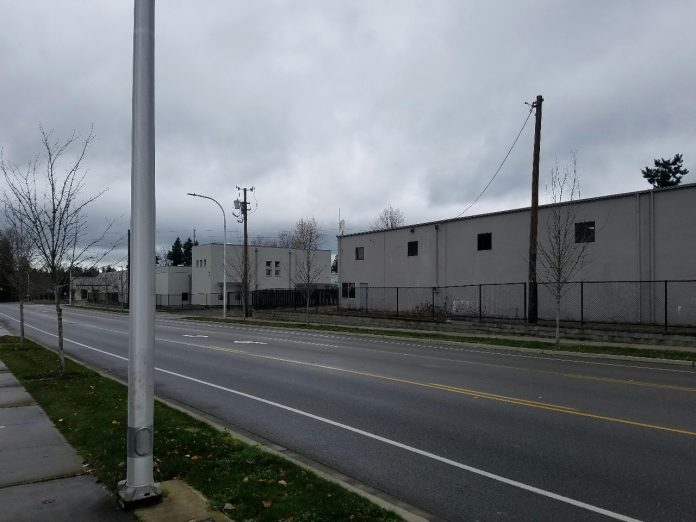
As Sound Transit prepares to extend the 1 Line into downtown Federal Way in 2026, the City is looking ahead to its second light rail station, currently set to open by 2035 as part of the Tacoma Dome Link Extension. The exact location of a station in South Federal Way is still up-in-the-air, but this month the Federal Way City Council approved a plan intended to pave the way for a new mixed-use neighborhood within walking distance of frequent transit.
But as Federal Way struggles to create even the beginnings of a walkable downtown around its first light rail station, it’s clear that creating a vibrant district nearly from scratch in South Federal Way will be an even heavier lift. The area is even more car-oriented and sprawled out.
An area dominated by big box retail stores and sprawling parking lots, South Federal Way’s planned transit-oriented development (TOD) area is wedged between Pacific Highway S (State Route 99) and I-5. Other state highways including Enchanted Parkway S (SR 161) and S 348th Street (SR 18) all converge in the area, making it a daunting place to navigate on foot. Bike facilities are essentially nonexistent except for a few gutter bike lanes marked only with paint. Transit service is very sparse — and with the start of light rail service over a decade away, that’s unlikely to change anytime soon.

Sound Transit’s current trajectory will add a station near Enchanted Parkway and S 352nd Street, directly in the middle of the area being eyed for redevelopment. Where exactly the station ends up depends on the alignment selected for the segment to the south, as the line heads into Fife.
In 2023, the board approved studying an additional Tacoma Dome Link Extension route that would head south on Pacific Highway instead of jogging back to I-5. Despite earlier efforts to weed out the Pacific Highway alternative in favor of the I-5 routing, the board belatedly added it back in, citing challenging soil conditions and cultural impacts identified by the Puyallup Tribe of Indians, either of which could make the I-5 alignment infeasible or significantly more expensive.
The project’s next major decision point won’t come until next year. That’s the point when property acquisition needs for guideway construction and staging should become clearer.
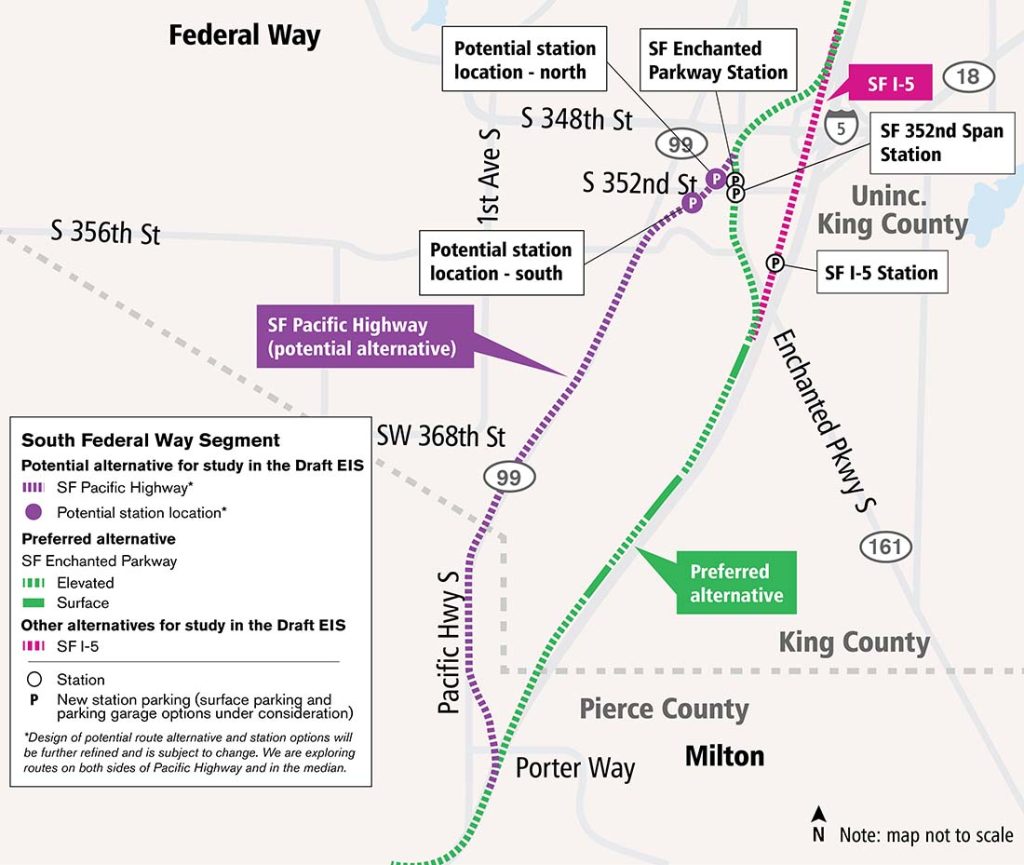
The subarea plan approved last week sets the stage for future zoning changes between Pacific Highway and Enchanted Parkway, across 59 acres that would comprise the first phase of a transit-oriented district. The area between Enchanted Parkway and I-5, currently home to a Home Depot and a Costco, would be excluded at least from this first phase. During discussions of the plan at the Federal Way City Council, the issue of sales tax collection from the existing businesses in the area became a focus.
“This area is one of our highest tax collection areas in the city, and we’re about to kill it, it looks like?,” Councilmember Jack Dovey, chair of the land use and transportation committee, asked City staff at a meeting in early September. “The plan’s great, it looks good on paper, but we’re going to displace a tremendous amount of revenue by saying this is what we want you to do, when I look at it.”
“Costco and Home Depot are outside of the TOD district, and in fact, Lowe’s was originally in the TOD district and we took them out, just for that reason,” was the reply given by special projects planner Lucy Sloman. Federal Way seems to want to have its cake and eat it too, by creating a countywide growth center around its future light rail station, which will make the city more competitive for grants, but also maintain the auto-oriented uses in the area that are a significant cash generator for the city.

On paper, the city hopes to see the addition of over 1,100 units of housing, along with over 900 new jobs, as properties get redeveloped within the first phase of TOD. Four- to seven-story buildings are envisioned at the heart of the district, with townhomes along the periphery. The idea of “revisiting” Federal Way’s existing parking minimums is put forward in the plan, but with no concrete proposals.
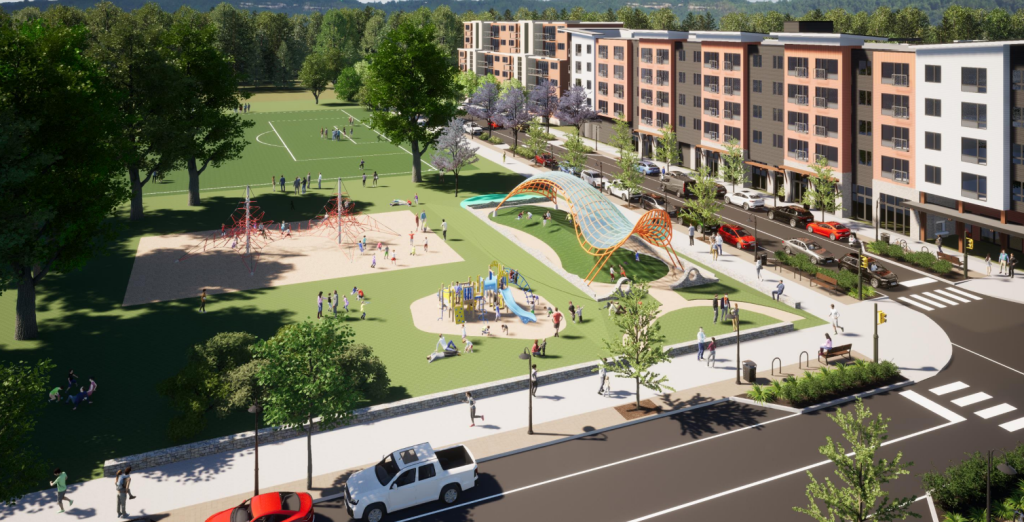
After the adoption of the subarea plan will come the approval of the update to Federal Way’s Comprehensive Plan, with code updates that actually put zoning changes in motion still down the road. After concerns were raised by nearby business owners, including DBM Contractors, Federal Way updated the plan to include language making it clear that the city would push Sound Transit for early property acquisition that would give property owners the maximum amount of time to prepare to relocate. But how much demand there is to start to create housing in the area this far in advance of light rail — or broader changes to make the area more attractive and pedestrian friendly — is another question.
Transportation investments remain mostly left out
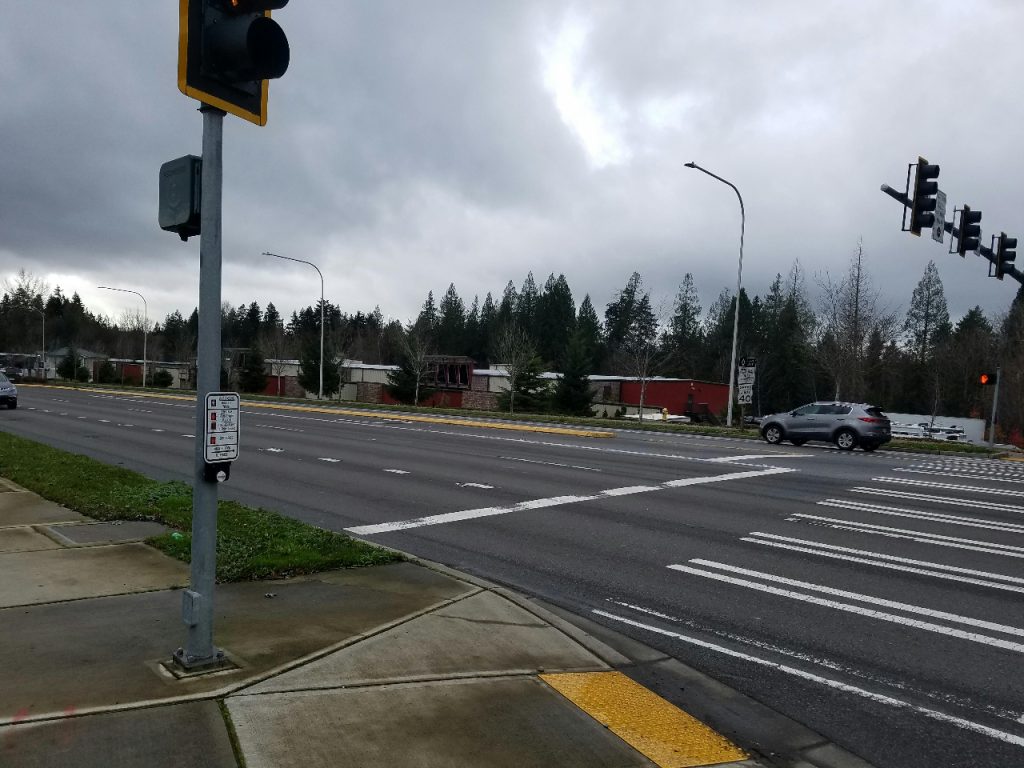
Like other burgeoning transit-oriented districts around the region, transforming an auto-dominated area into a neighborhood where the infrastructure encourages walking, biking, and transit trips is absolutely to be a challenge in South Federal Way. Since big box retail uses are sticking around for the foreseeable future, local leaders appears intent on leaving the twin north-south state highways operating as is, despite safety needs that will only become more pronounced if the plan to encourage more housing, amenities, and commercial activity near them succeeds. The plan treats those state highways like natural features.
“Due to vehicle speeds and volumes of traffic on Enchanted Parkway South and Pacific Highway South, these roads are unsuitable for bicycle facilities,” the plan notes. “Bicycle facilities should be prioritized on roadways with lower traffic volumes and reduced operating speeds, ensuring safer and more accessible options for cyclists.”
The few changes that are envisioned are potential multimodal upgrades to S 352nd Street and S 356th Street, with the most ambitious element being a new pedestrian bridge over I-5 to the southeast of the TOD area. The plan is also focused on improving the pedestrian connection to the existing Federal Way Park and Ride across Pacific Highway, illustrating that its imagination is confined to its present car-dominated reality.
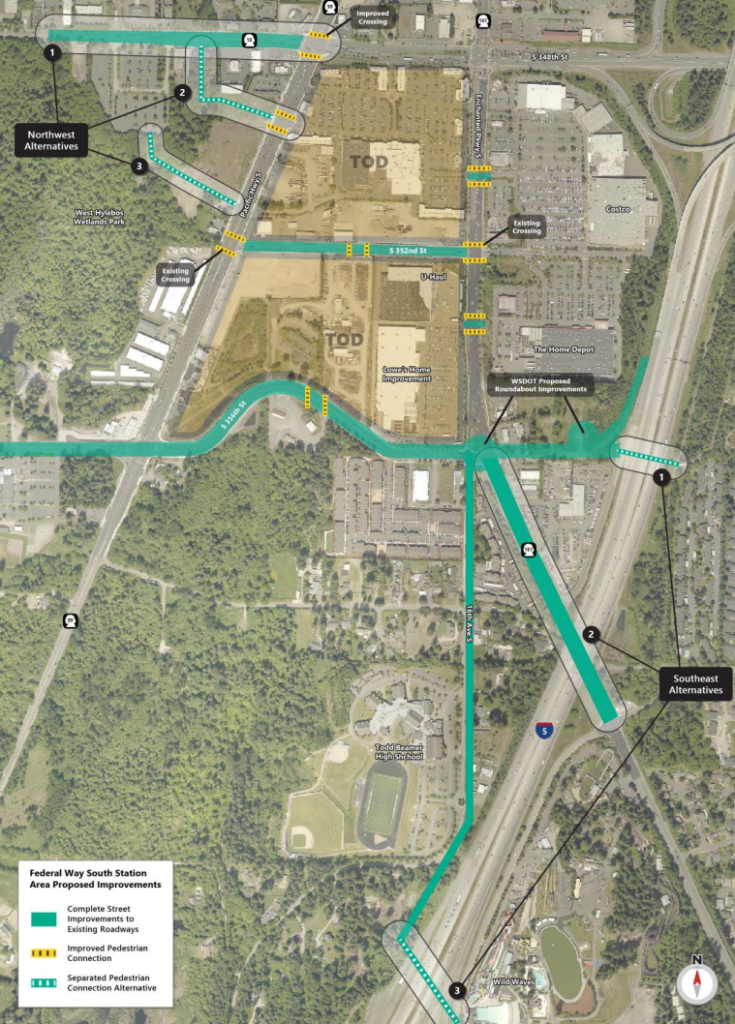
Federal Way’s 2012 bicycle and pedestrian plan, which is still in effect, wholly lacks any imagination when it comes to the area, only calling for a bike lane along S 352nd Street, a narrow paint facility that already exists. A small trail connection (below in green) is the only other connection included in the plan that doesn’t exist today.

Within the neighborhood itself, the plan calls for breaking up the large blocks with new internal streets that would provide additional connectivity. The goal is to “create a fine-grained and gridded street network which would facilitate a more walkable and bikeable environment,” but whether this can actually be achieved well is going to hinge on implementation. Federal Way is counting on developer interest to achieve its public realm vision. Strenuous requirements to use private land to carve out new street right-of-way rather than utilizing existing street space, could also discourage development or decrease the number of potential units.

Despite the ability to create these streets from scratch, the initial concepts included in the plan reinforce the car-dominated nature of the area, prioritizing space for back-angled parking on what are supposed to be the new neighborhood’s inviting main streets. Bike facilities are missing from the initial cross-sections entirely.
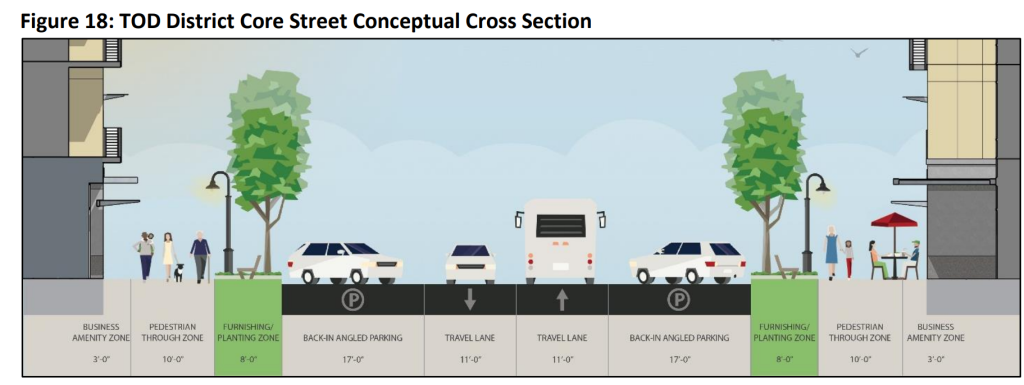
Following the unanimous adoption of the subarea plan last week by the Federal Way Council, the vision for the broader area around a major Sound Transit 3 station is a bit more clear. However, whether Federal Way’s transit-oriented development dreams will actually come true remains in doubt. Given the substantial hurdles for transit-oriented residents being kept in place thus far, it’s clear the city isn’t ready to go all-in.
Ryan Packer has been writing for The Urbanist since 2015, and currently reports full-time as Contributing Editor. Their beats are transportation, land use, public space, traffic safety, and obscure community meetings. Packer has also reported for other regional outlets including BikePortland, Seattle Met, and PubliCola. They live in the Capitol Hill neighborhood of Seattle.

